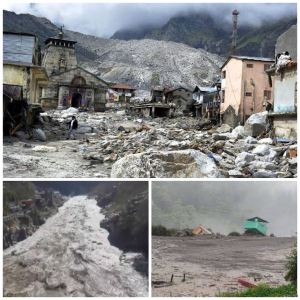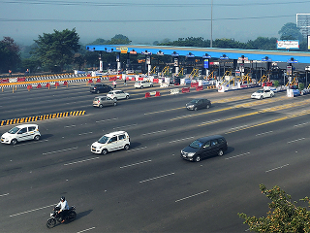History Of Uttarakhand’s Endless Tragedies: How Nature Is Fighting Back

Dehradun | August 6, 2025 : From ancient landslides to modern flash floods, Uttarakhand has seen a long history of natural disasters. Nestled in the fragile Himalayas, the state has become a hotspot for repeated tragedies, many of which are worsened by unchecked development, reckless deforestation, and climate change.
The latest disaster, a flash flood triggered by a cloudburst in Dharali village, Uttarkashi is a painful reminder of how vulnerable the state remains. While rescue operations continue, it's important to look back at how frequent such tragedies have become and what’s behind them.
A History of Disasters
Uttarakhand’s troubles date back to the 19th century. The 1880 Nainital landslide claimed over 150 lives, a dark beginning to a long list of calamities. In 1991, the Uttarkashi earthquake killed more than 700 people and left thousands injured. Just a few years later, the 1999 Chamoli earthquake shook the region again, adding to the trauma.
Floods have become more frequent and destructive. The 2013 North India floods, triggered by early monsoon rains and cloudbursts, were among the deadliest in recent memory killing over 5,000 people. Villages were washed away, and the Kedarnath temple town was nearly erased. In 2012 and again in 2023, Himalayan flash floods left behind similar devastation.
Landslides, like the 1998 Malpa disaster, which buried an entire village and killed more than 200, are now more common due to slope cutting and construction. Forest fires have also become regular events with major fires in 2016 and 2020 often made worse by rising temperatures and deforestation.
Even tragedies like the 1996 stampedes in Haridwar and Ujjain or the 2024 Almora bus accident show how fragile life in the hills can be, where narrow roads and overburdened infrastructure buckle under pressure.
What’s Going Wrong?
Experts say it’s not just nature to blame. “It’s a man-made problem,” says environmentalist Ramesh Bhandari. “We’ve built roads, hotels, and hydroelectric projects in places that were never meant to be disturbed.”
Deforestation, blasting for roads, and haphazard construction on unstable land have weakened the soil. Illegal mining and river encroachment worsen flood impacts. Climate change adds fuel to the fire with heavier rainfall, melting glaciers, and erratic weather patterns increasing the risk of cloudbursts and landslides.
The Way Forward
While rescue teams like the NDRF and SDRF work tirelessly after each disaster, the long-term solution lies in prevention. Experts are calling for sustainable development, stricter construction rules, and better early warning systems.
Uttarakhand’s beauty is its biggest strength and also its greatest risk. Without careful planning, the state may continue to face disaster after disaster. It’s time to listen to the land before it’s too late.




